My role
UX/UI Designer consultant
Design colleagues
Art director at RAÄ
Time frame
Dec 3rd 2020 (release)
Oct 2019 – May 2020
Dec 3rd 2020 (release)
Oct 2019 – May 2020
Tools used
Sketch
Adobe XD
InVision
Lookback
Typeform
Slack
Skype
Links
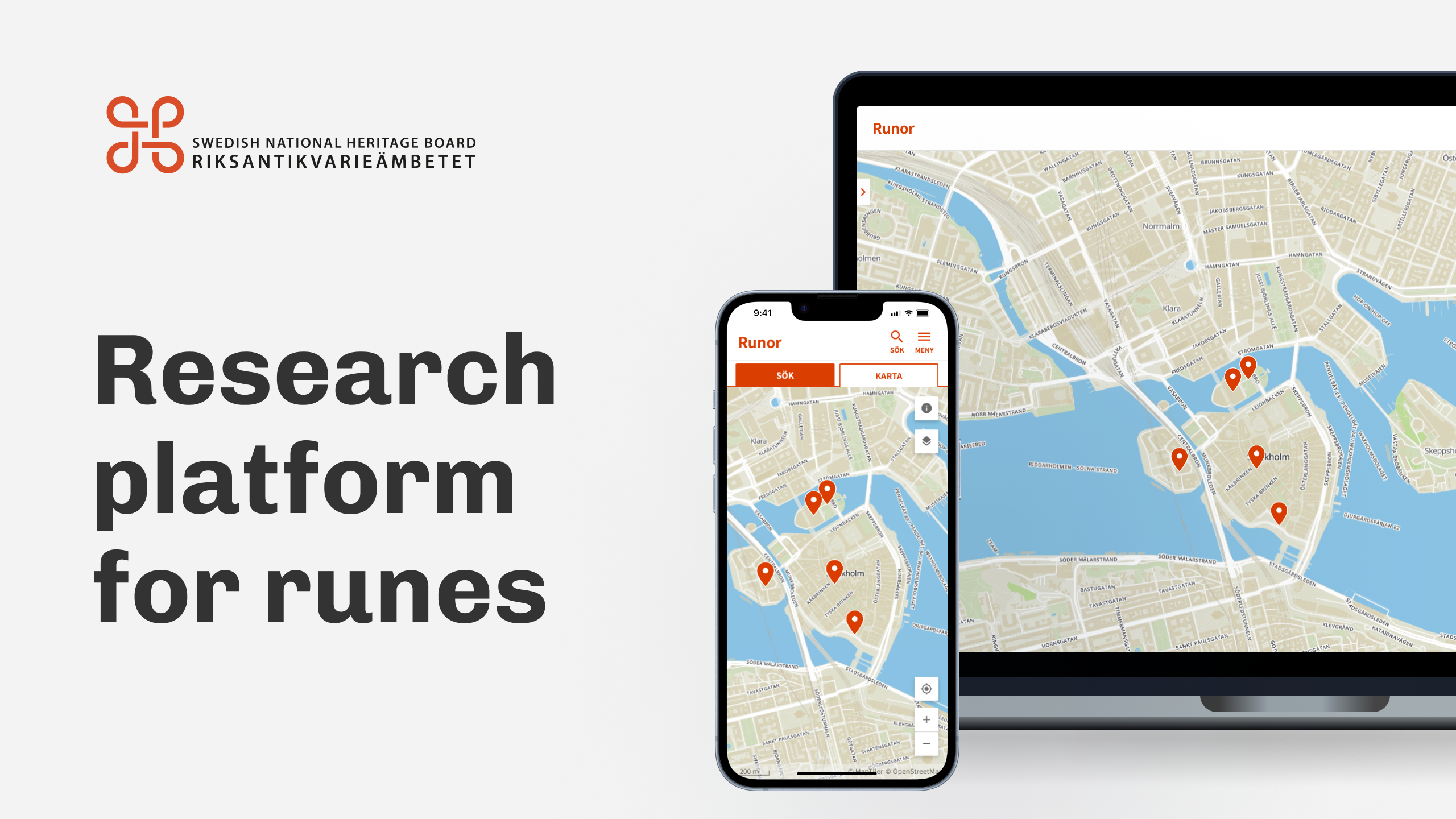
About the client
The Swedish National Heritage Board (in Swedish: Riksantikvarieämbetet) is Sweden’s central administrative agency for cultural heritage. The office was instituted on 20 May 1630 and is, therefore, one of Sweden’s oldest government agencies. Riksantikvarieämbetet was releasing a new digital research and information platform, called Runor, about rune stones and rune inscriptions.
The goal
To help Riksantikvarieämbetet finish design sketches and conduct user tests on their new digital research platform for Sweden’s runic inscriptions, called Runes (Swedish: “Runor").
Deliverables
All updated sketches were consolidated in the design program Sketch. Two prototypes were created based on different scenarios. User tests and interviews were conducted, with insights and results documented.
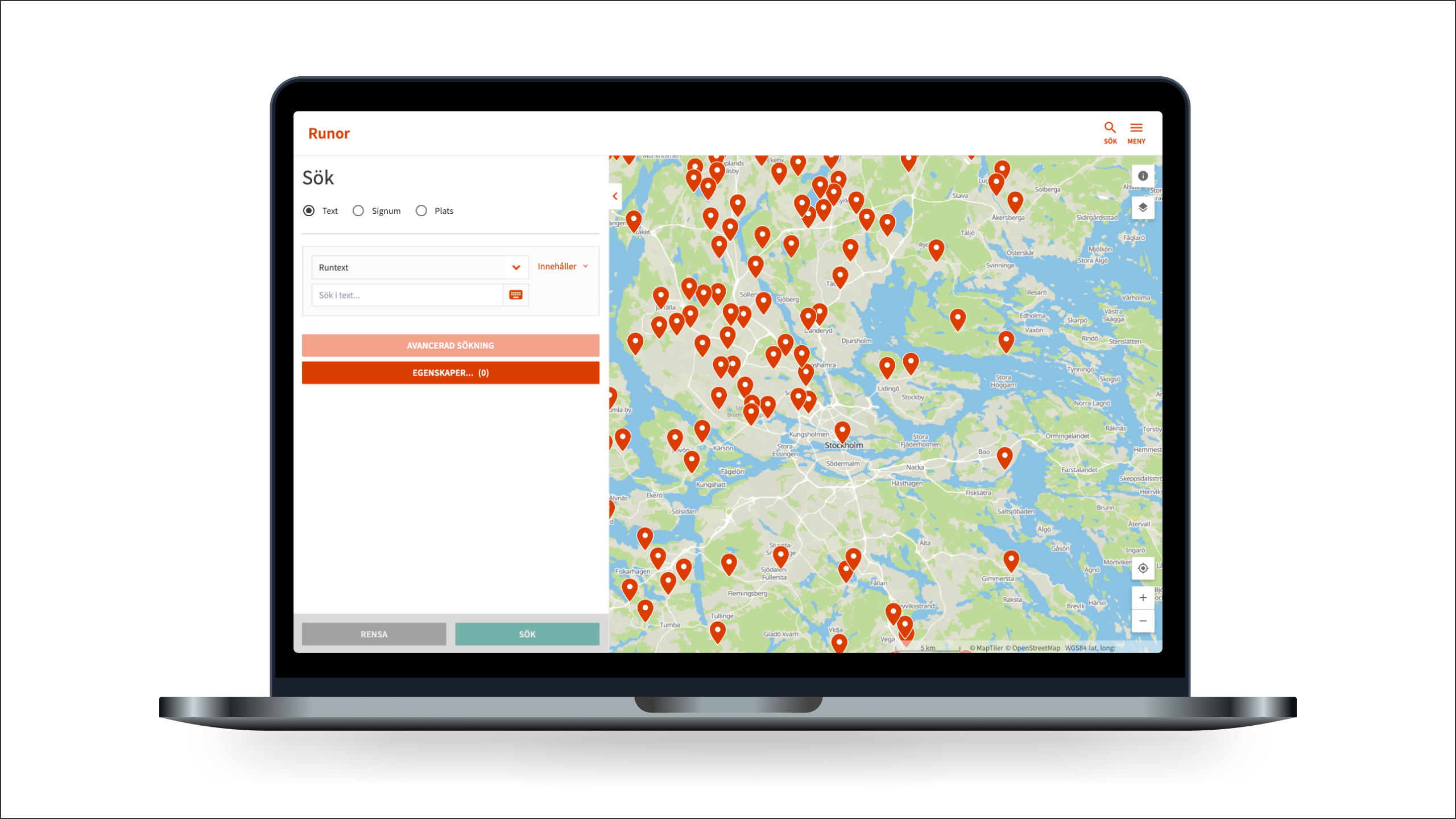
My role & the team
The base was in Uppsala at the time, but the project needed support on site at Gotland as well. The team consisted of an art director employed by the client, a project leader, experts, and researchers at Uppsala University.
The work process
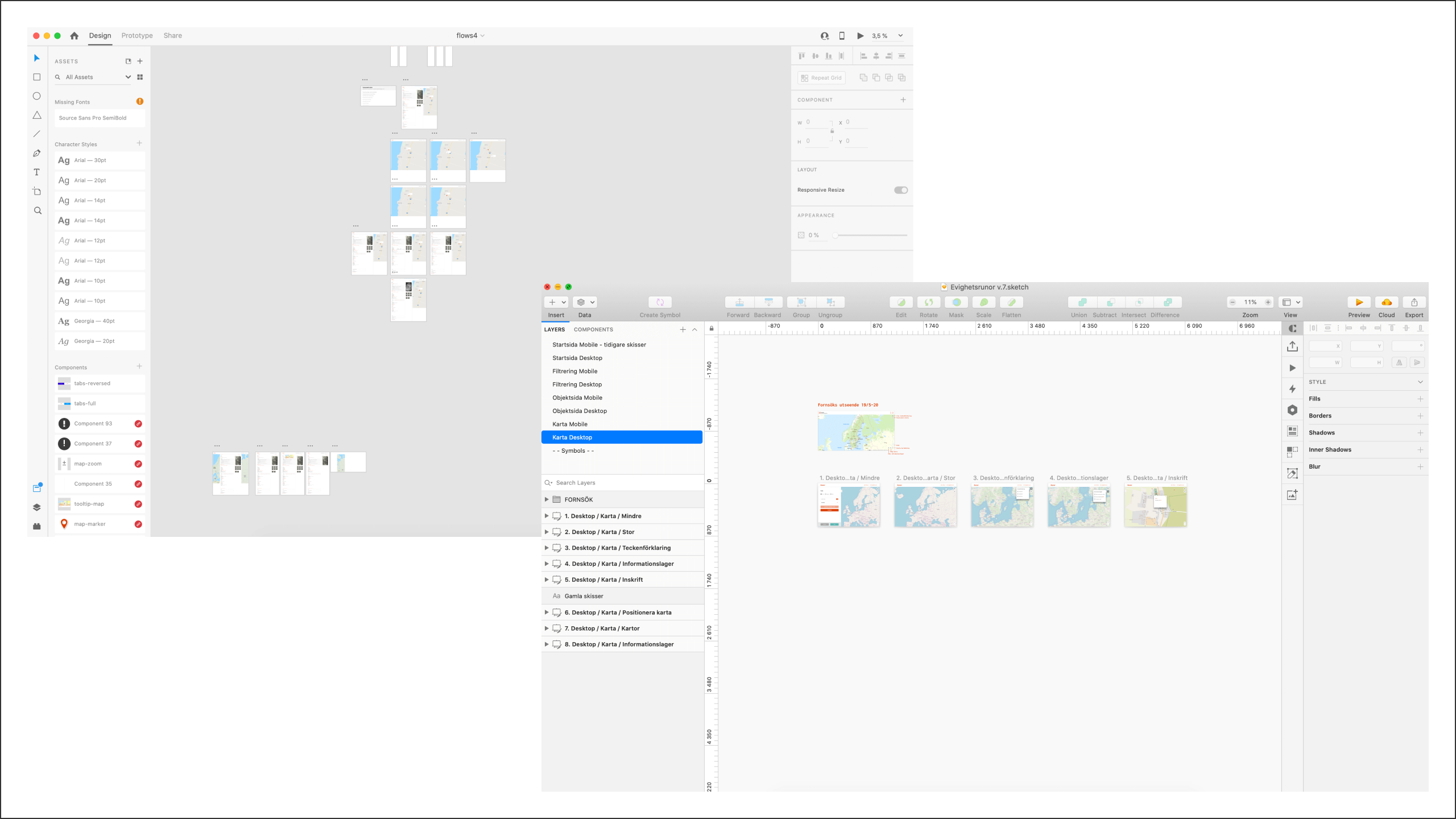
UI design sketches
The process began with transferring all existing designs from Adobe XD to Sketch. Missing design functions and improvements were planned and implemented. The implemented areas included search, search filter, map view, and a presentation page for specific objects.
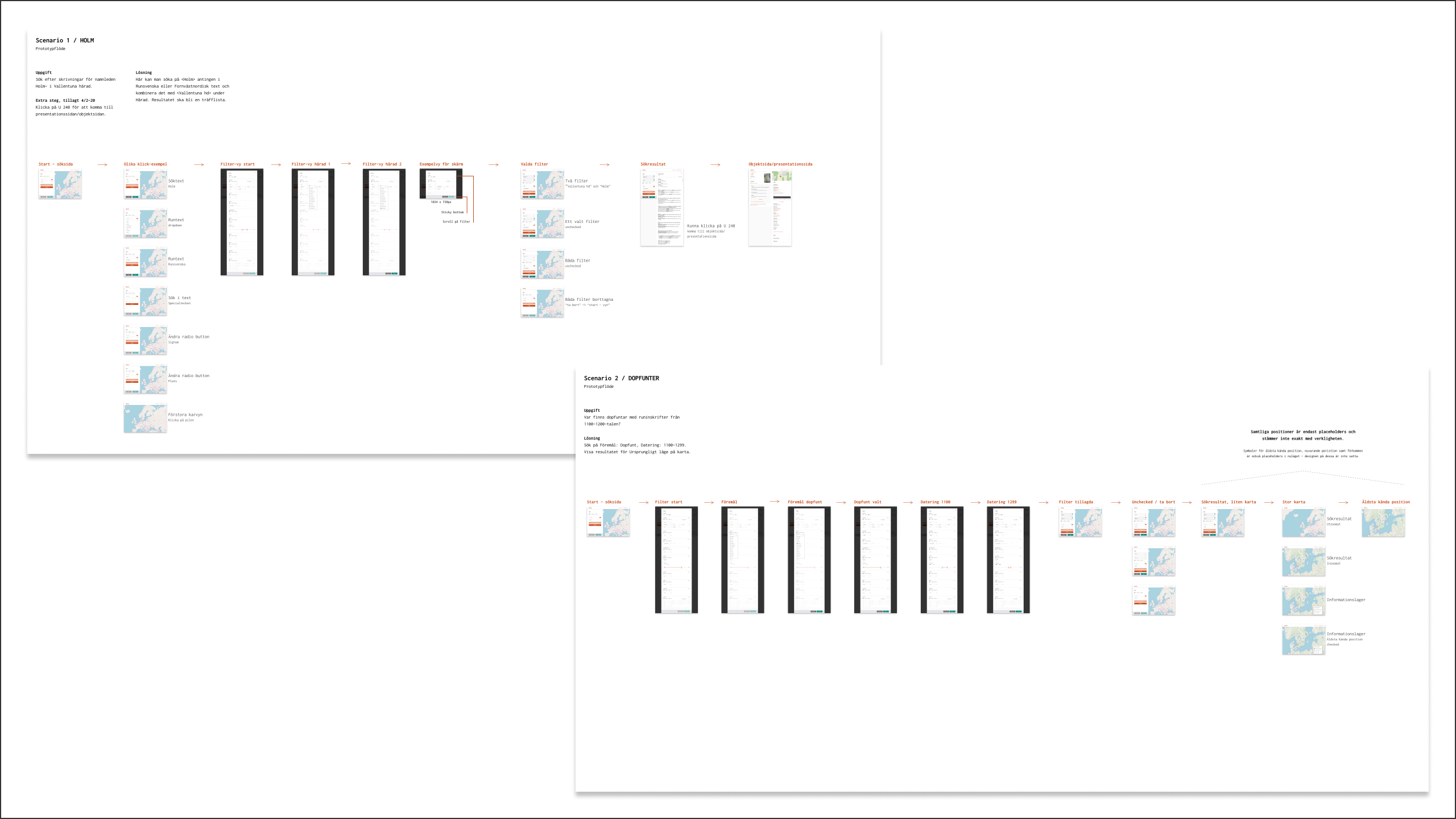
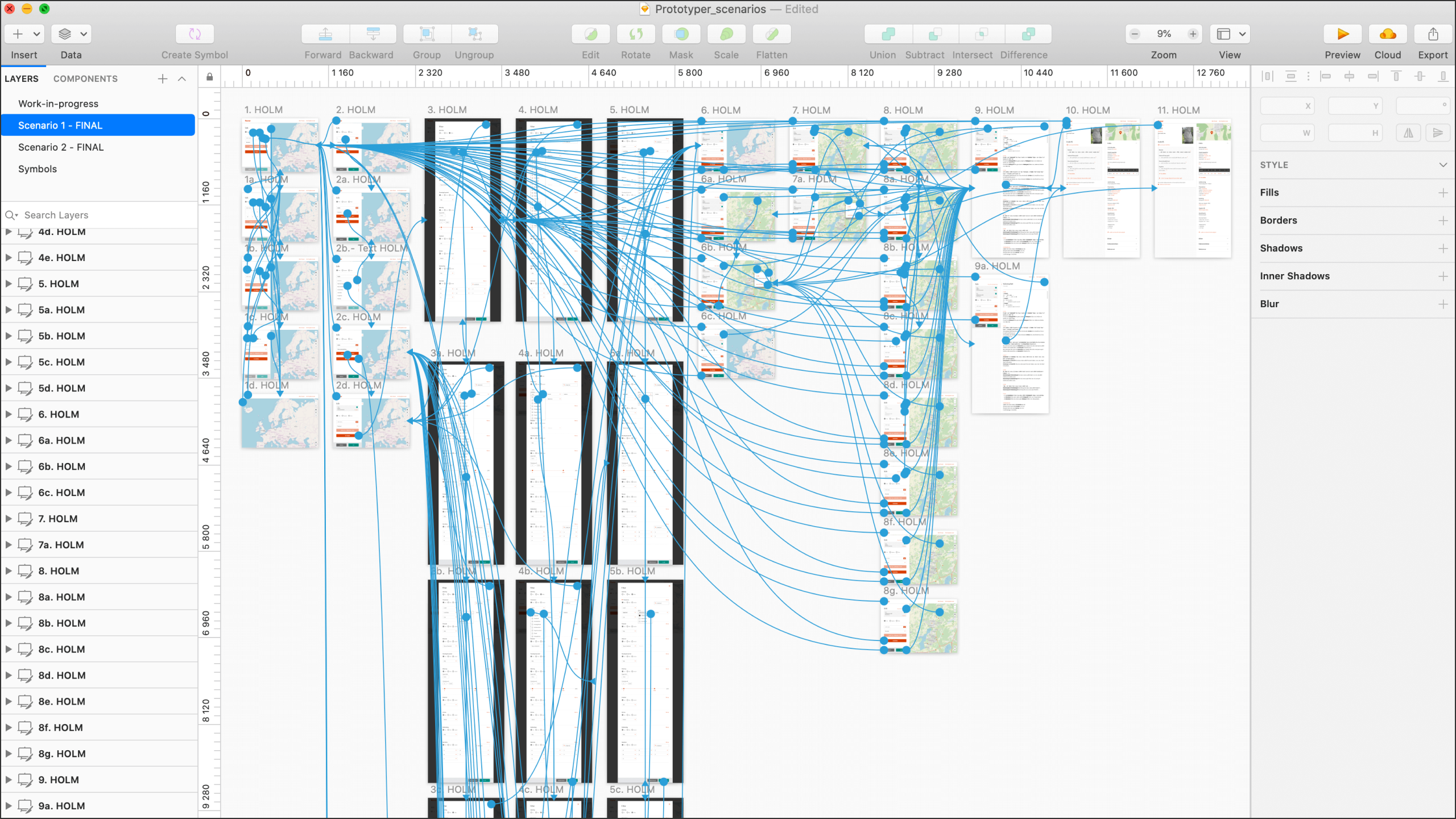
Prototype of two scenarios
The client selected two distinct and typical user search scenarios. As a first step, a "prototype flow" was laid out to clearly visualize the various steps for the client. Once approved, the scenarios were prototyped in preparation for upcoming user tests. This approach ensured that only the most essential and commonly used functions were prepared, rather than the entire platform.
The two scenarios were:
- Where do you find baptismal fonts with rune inscriptions from the 10th-11th century?
- Search for scripts with the name “Holm” within Vallentuna district.
The prototypes were created in Sketch, with minor adjustments made in InVision.
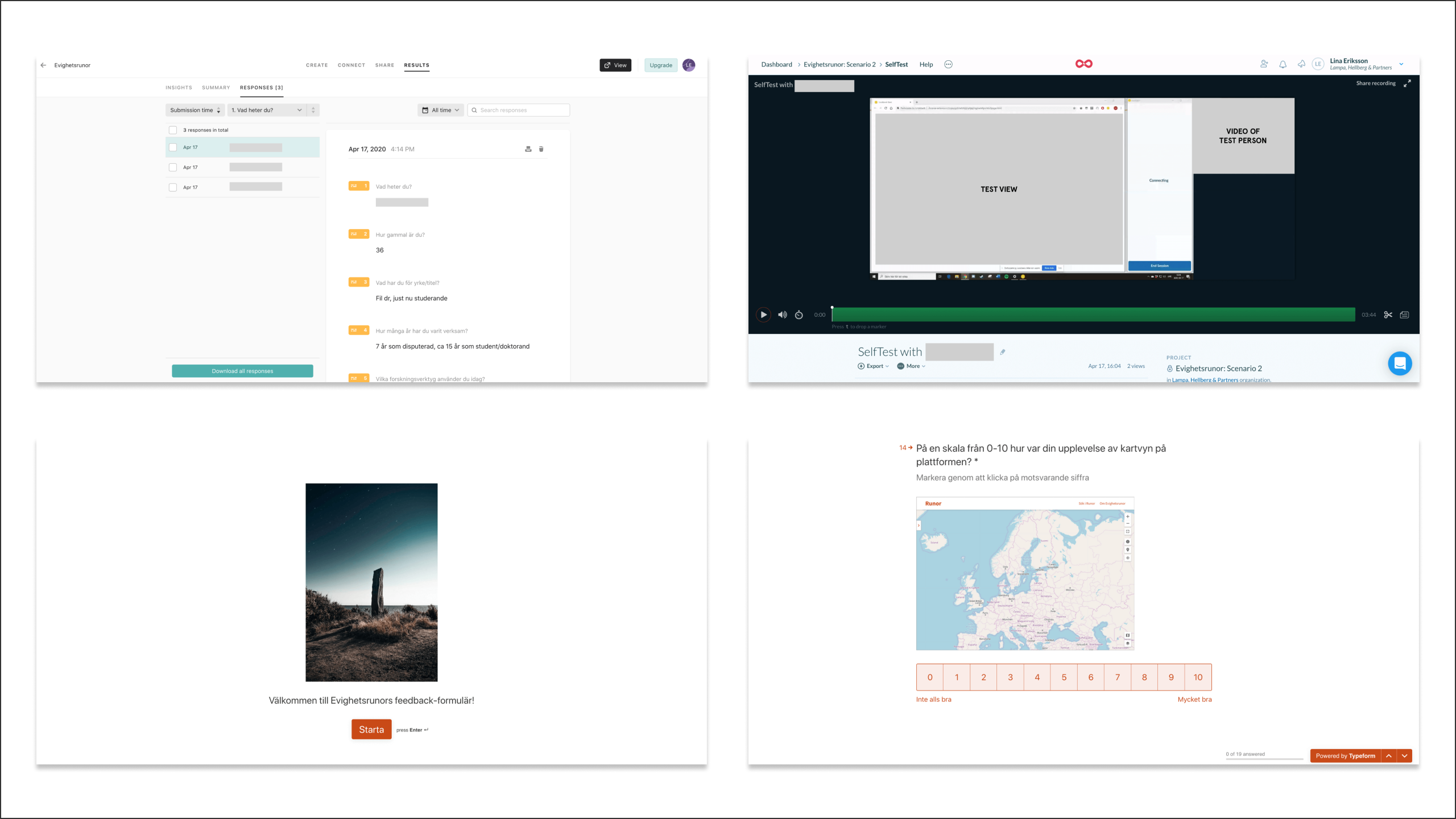
User testing & analysis
The setup for fully digital and accessible user tests was planned, structured, and scoped to comply with new restrictions and work procedures due to Covid-19. A digital form and survey were created to document tester feedback on the prototyped research platform, incorporating quantitative research questions to gather diverse feedback, including simple ratings and in-depth descriptive responses. Lookback was used for video recording, while Typeform facilitated the questionnaire.
The collected quantitative data and user behaviors from video recordings and surveys were studied, transcribed, analyzed, and synthesized.
User tests were conducted with three participants across two different scenarios. All participants successfully completed Scenario 2 without major disruptions. In Scenario 1, one participant chose to end the test early due to confusion, while the other two completed it. The early termination may have been influenced by the complexity of the scenario and the participant’s background and experience. A deeper analysis of the situation was documented, followed by discussions with the client on how to prevent users from missing key functions. These insights highlighted the value of user testing in identifying areas where the user experience needs improvement or adjustments.
Participants also provided ratings for different platform areas:
- Search: 5.7/10
- Filter: 8.7/10
- Search result list: 6.7/10
- Map: 8/10
- Object page: 7.7/10
Overall, the results showed a solid average performance, with areas identified for improvement. All responses, feedback, ideas, and ratings were compiled into a 26-page report and delivered to the client. Given that the user tests were conducted entirely digitally due to Covid-19, it would have been feasible to include more participants than initially planned, which could have further enriched the findings.
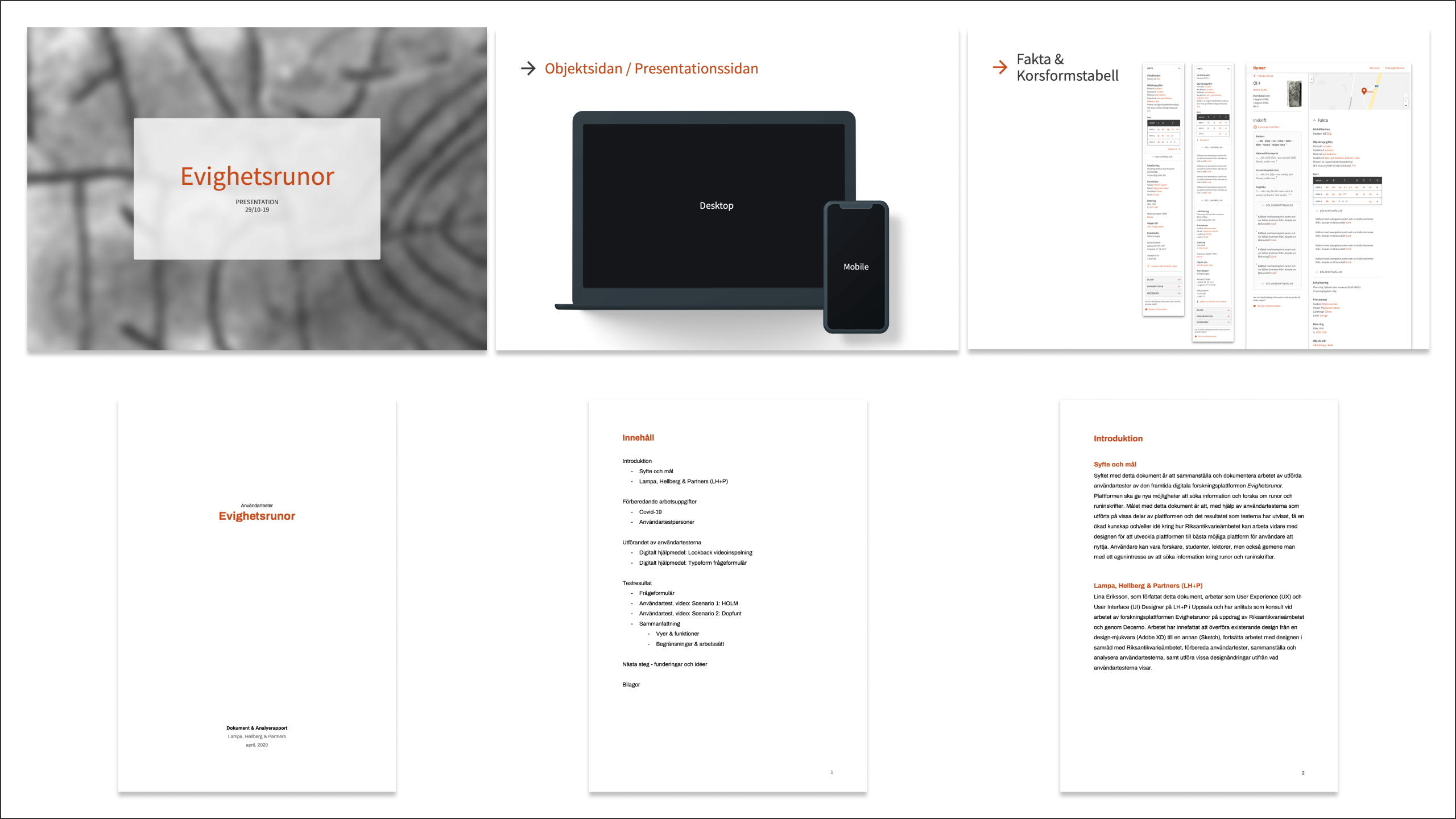
Workshop & presentations
A presentation was conducted for the work team, highlighting the importance of responsive design. Various platform areas were discussed, including the menu, resources, facts and forms, images, documentation, references, and map view. Additionally, links to InVision with clickable prototypes of the object page for both mobile and desktop were provided.
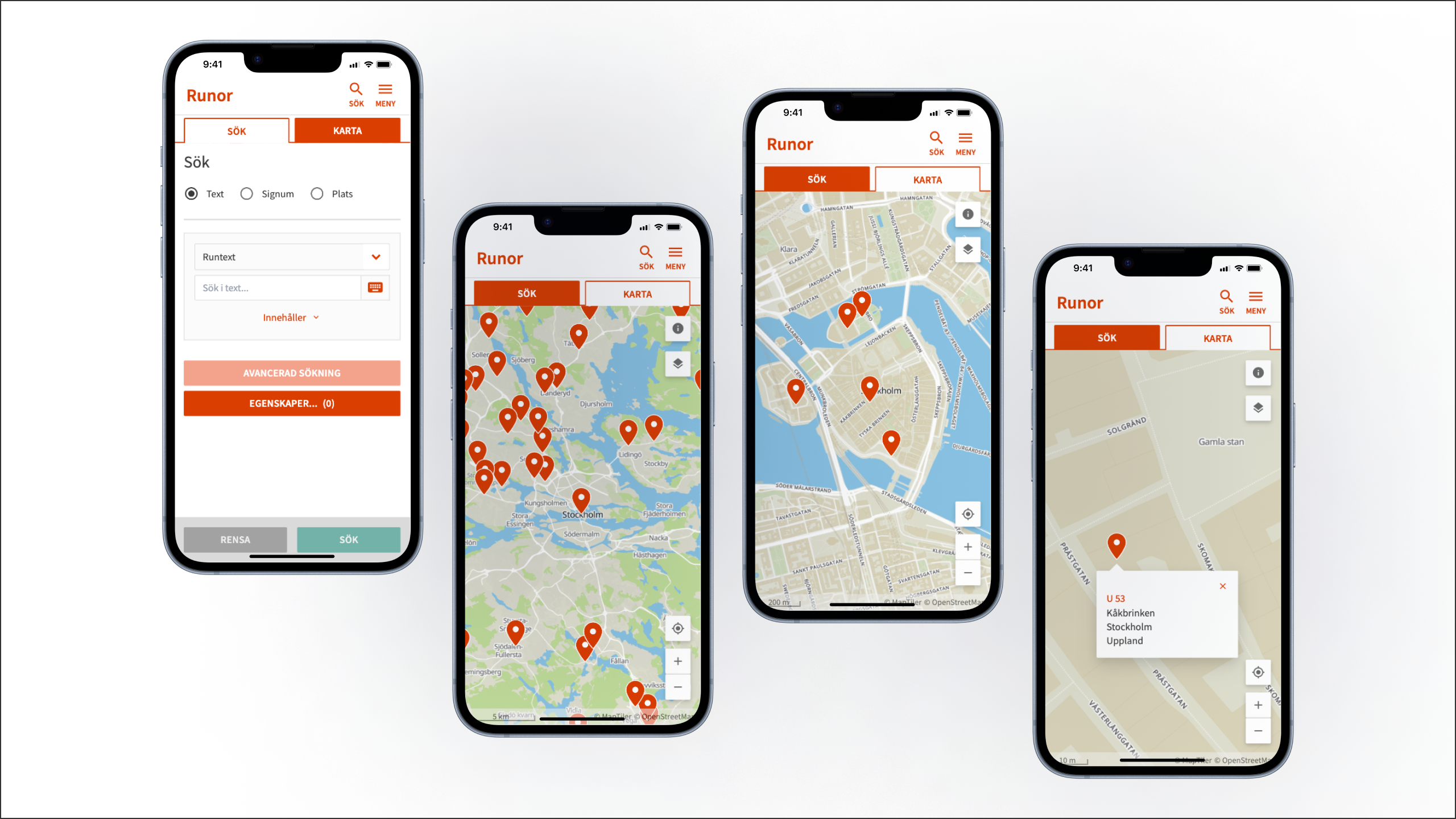
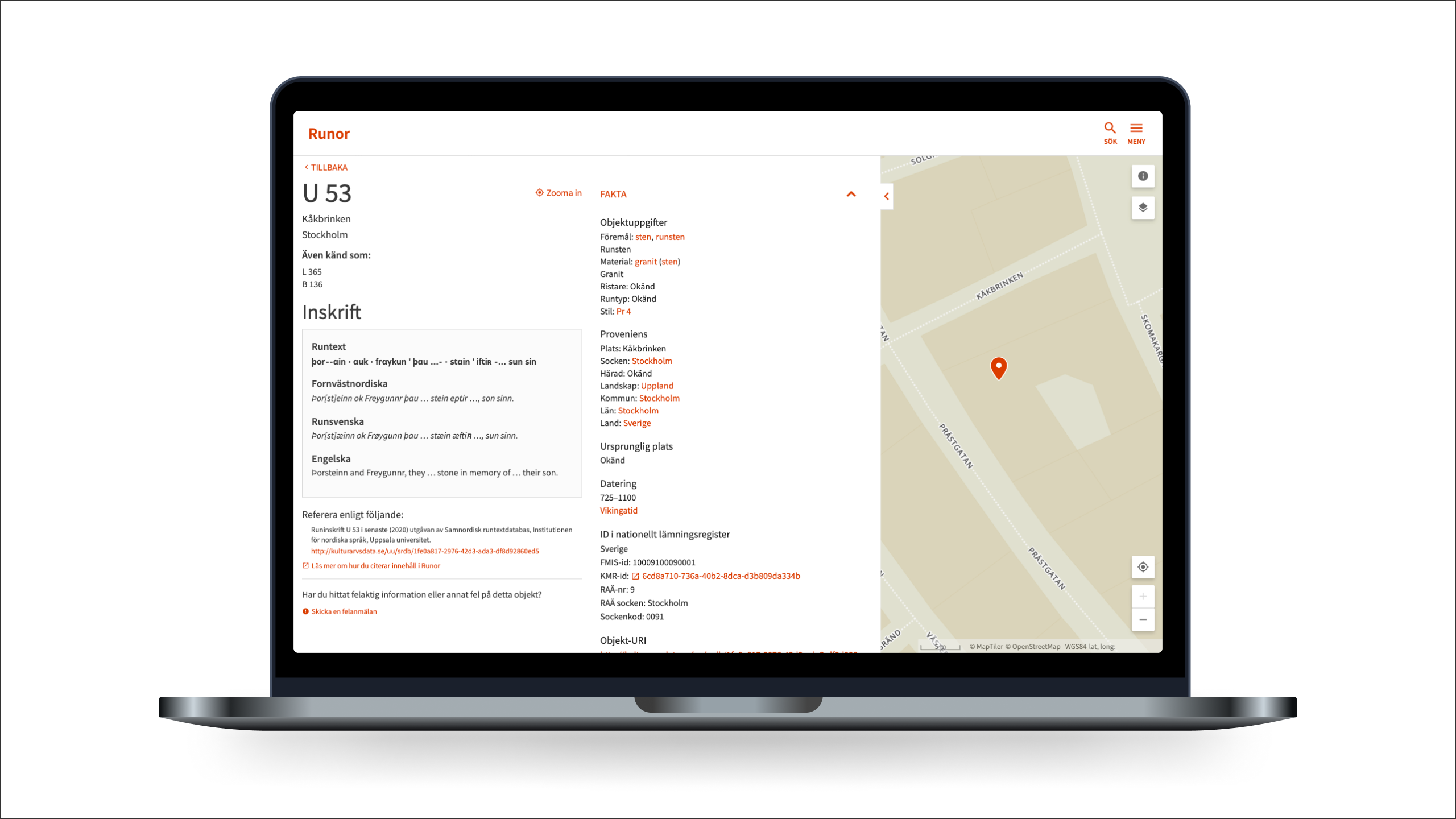
Delivery and result
While working with Riksantikvarieämbetet, meetings were prepared and led to present the results and insights from user tests.
User tests and interviews were conducted, along with communication with subject matter experts in runes and rune inscriptions.
At the project's conclusion, a client-friendly package was created, including all data, results, and insights from the user tests. A handover meeting was also conducted with the next UX designer, providing all relevant materials and documents, as well as sharing key information and insights from the project.
The platform was released December 3rd, 2020 and you can find it live here. You can also read about the digital release event here.
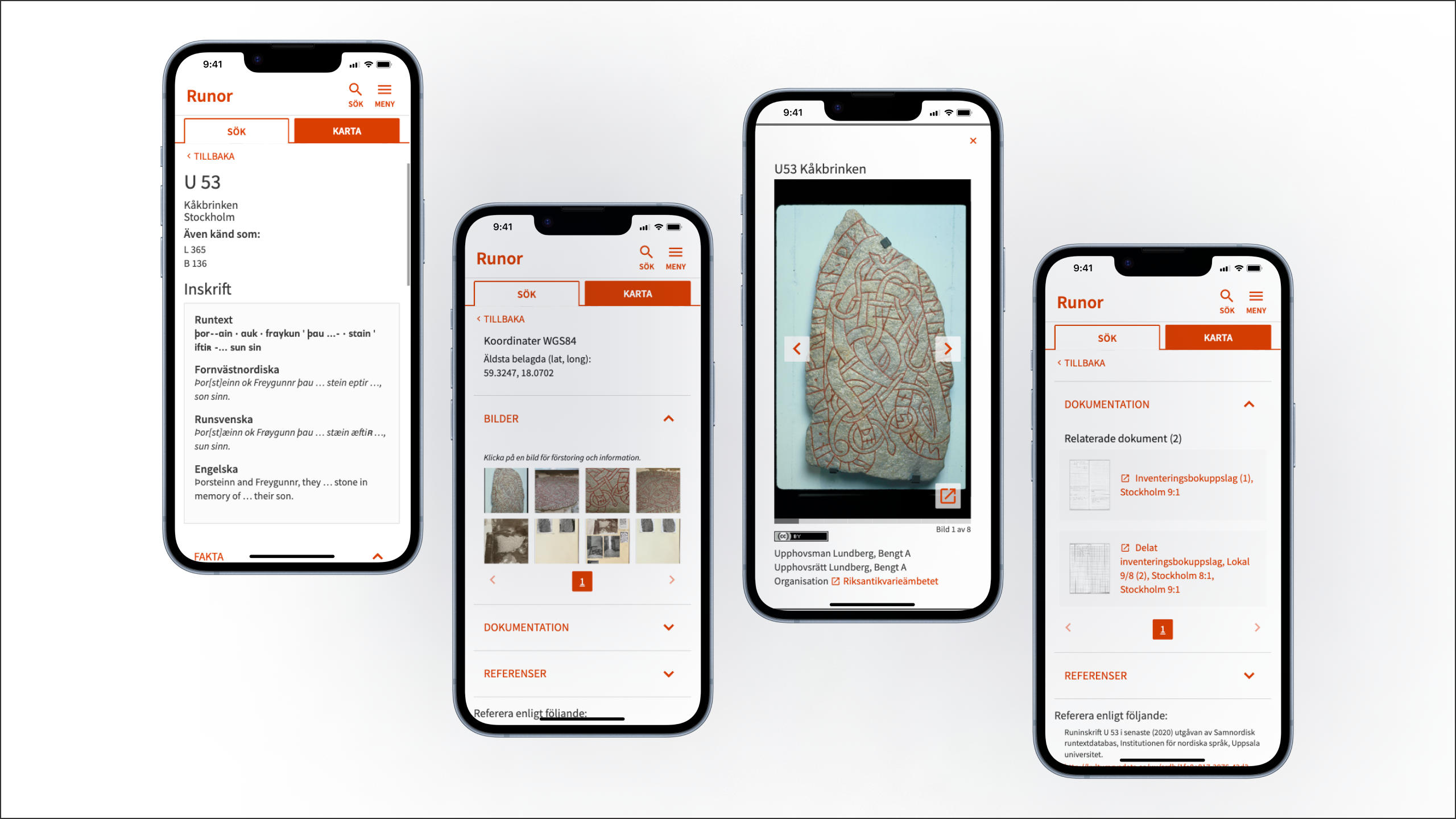
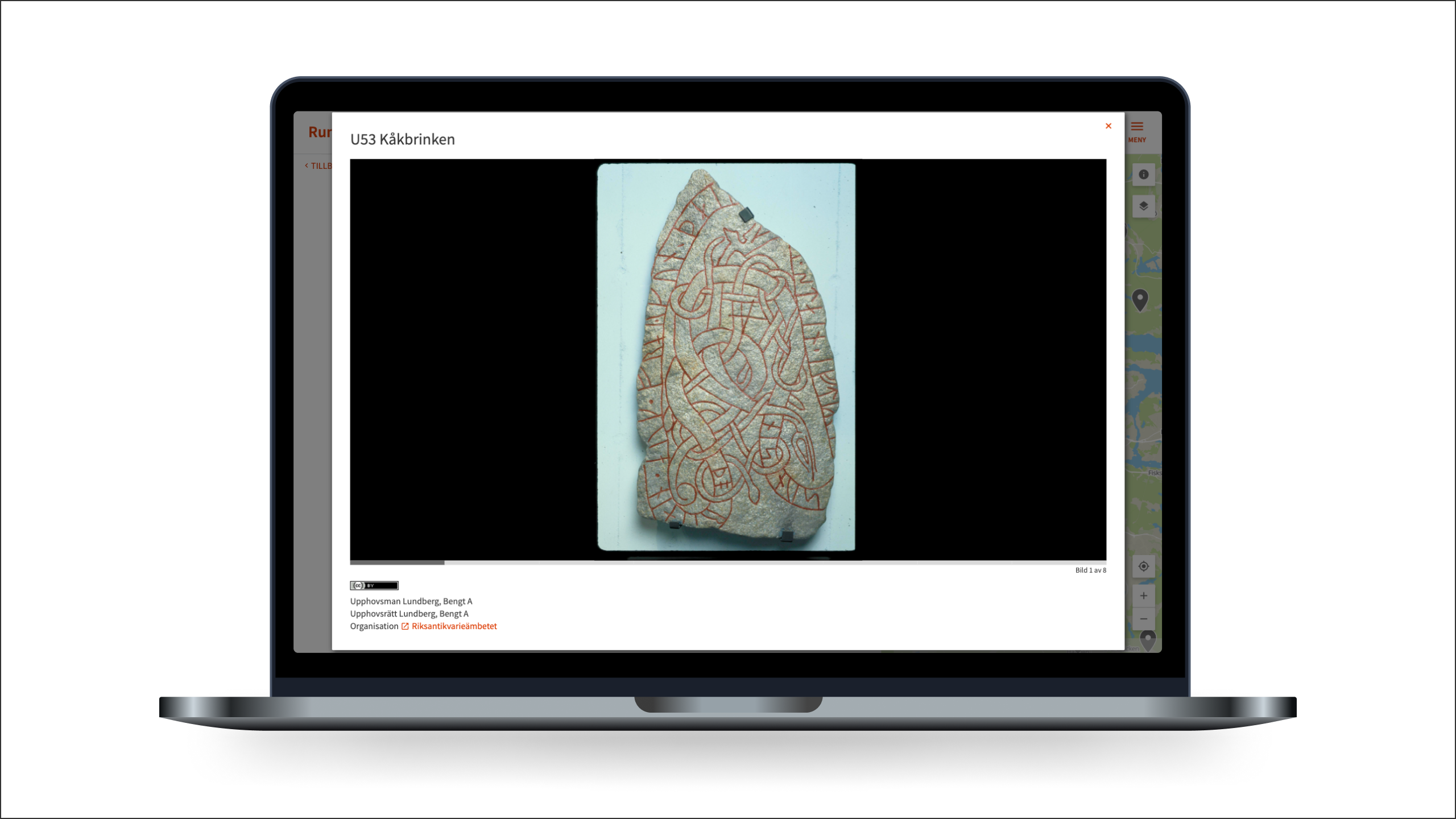
Final thoughts
Working on the Runes project provided valuable experience, not only in conducting user tests but also in deepening knowledge of Swedish cultural heritage, engaging with experts in Visby, and managing the responsibilities of a consultant. The project fostered both professional and personal growth.
Involved at the end of the project
The project began in January 2017, and work on the platform started in October 2019, near the end of the project period. As a result, the expectations for the UX design process were different, with an immediate focus on design rather than initial research and exploration. Since the work began late in the project timeline, some gaps in deeper understanding and research were occasionally encountered. Every designer and team member has their own approach to projects and tools, which can create challenges when transitioning into an ongoing project. In hindsight, a more thorough walkthrough of the completed designs or additional background information would have been beneficial. However, this was not fully possible as the previous designers were no longer with the project.
Design choices
The style guide, created by the Art Director (AD) at Riksantikvarieämbetet, was followed throughout the design process. When new components were needed, requests were made to the AD, and in some cases, sketches were created independently. Working within an existing design framework can present challenges, as design choices are influenced by prior decisions. If the design concept had been developed from the beginning, some different design choices might have been considered.
Covid-19
A global pandemic was never anticipated to disrupt the user testing process. However, when in-person testing was no longer possible, adjustments were made to conduct all tests remotely and entirely online. This required rethinking software choices and restructuring the testing setup to align with the new circumstances. While Covid-19 presented challenges, it also encouraged creativity and adaptability.
© 2025 Lina Eriksson